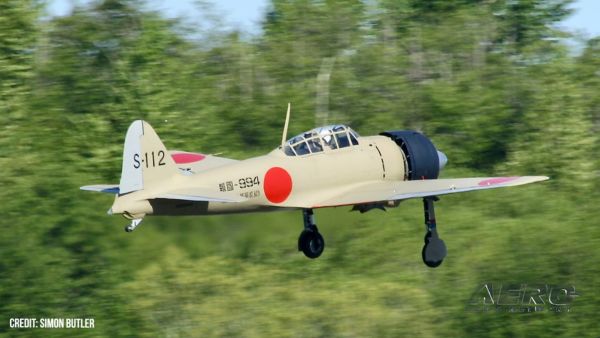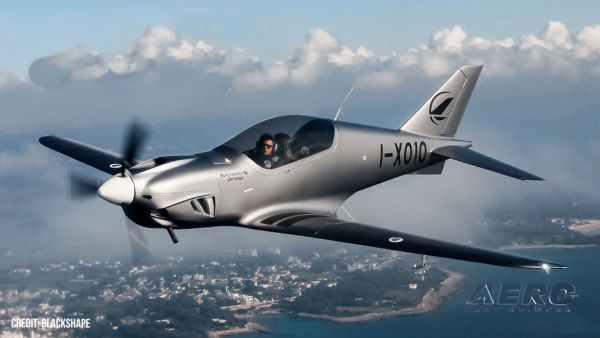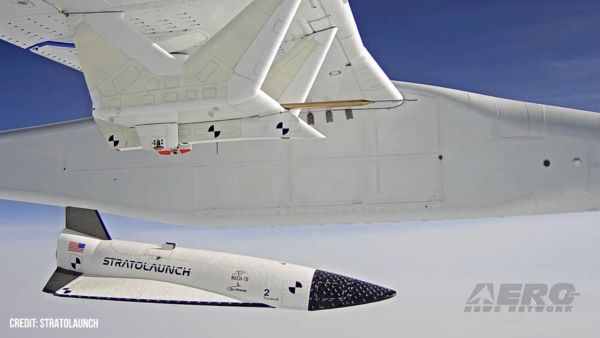Part Three: Evektor SportStar
by ANN Managing Editor Rob Finfrock
Over the past 10 months, I've had the opportunity to spend some
seat time in three emerging players in the light sport aircraft
segment. As a former Cessna 172 jockey, I must admit I wasn't
expecting much when I first took to the skies on demo flights in
three significantly smaller aircraft, lower-powered aircraft... but
wow, was I wrong.
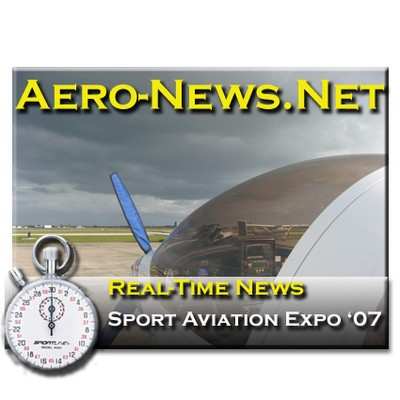
These reports are NOT flight tests -- I'll leave the heavy
lifting around here to Jim -- but rather my impressions of these
aircraft from the perspective of a student pilot, looking at LSA as
an option to continue and expand my flight training... the same way
other potential sport pilot entrants will likely approach the
segment.
With that in mind...
Evektor SportStar
I'm kicking myself now... but I'd resisted flying the SportStar
for awhile, for the sheer reason the design just didn't look
"right" to me. A stupid reason not to fly an airplane, I know...
but the sight of that huge glass canopy, seemingly oversized for
the plane it's attached to, struck me as odd. (I'll admit it...
when it comes to planes, I'm shallow; aesthetics are a big deal to
me.) Like I said, I regret that decision now... and at least I
had the opportunity to atone at Sebring 2007 last week.
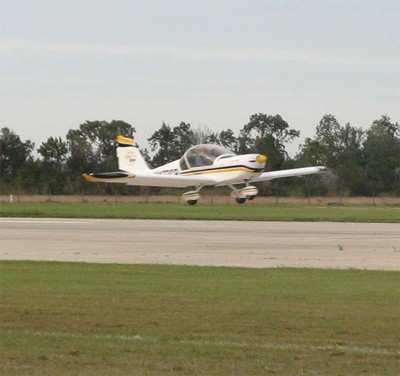
The aluminum-bodied SportStar (which uses bonded and riveted
panels... the only LSA to feature that technology, which adds
strength and rigidity to the airframe) was the first aircraft
certified in the S-LSA category, and continues to be at the
forefront of the LSA segment. In addition to respectable private
owner sales, US-distributor Evektor America has also made
significant inroads in the pilot training segment -- with 12 pilot
training centers across the country, all flying SportStars. Make no
mistake... we'll be seeing a lot more of these planes in the
future.
The SportStar I flew was an older model, lacking the gross
weight increase for 2007 models and electric trim control seen on
most 2005-and-above aircraft. I was also told this was a fairly
basic model... although it did not feel like it. The cockpit was
well-trimmed, with most surfaces covered in durable fabric (given
this plane's primary mission as a demonstrator, it is impressive
the seats showed NO wear) and a well-finished, surprisingly deep
stowage well behind the fixed seats. Clear flight instrumentation
is positioned in front of the left seat, with a GPS 296 in the
center and engine gauges on the side. All areas of the panel are
easily viewed and reached from either seat.
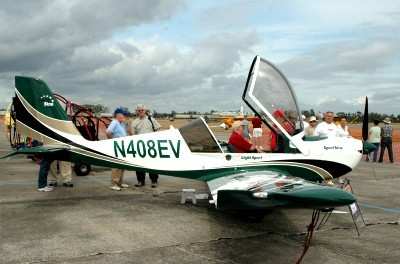
And wow, the room. I'm a fairly big guy, as was the demo pilot;
yet both of us "manly men" had more than ample room to move in our
seats, without our shoulders touching. The huge canopy I'd thought
looked "weird" on from the outside translates into an almost insane
amount of shoulder-and-head- room once seated in the plane, and it
offers unparalleled visibility to boot. Function, meet form. Lesson
learned.
Of the three LSAs I've flown thus far, the SportStar was also
the easiest for me to climb into and out of... an, ahem,
big consideration.
During my 20-minute demo flight, control feel seemed to strike a
balance between my experiences in the StingSport and Zodiac... offering most of
the eager responsiveness of the Sting, as well as the
sense of stability I'd appreciated in the CH601. Admittedly, I was
quite rusty on the controls -- one really shouldn't let seven
months go by between flights, especially as a student -- yet the
SportStar made me look good, and more importantly, FEEL good.
Either this is a VERY intuitive plane to control, or my endless
sorties on FS2004 have been paying off.
Like its flight behavior, current SportStar pricing splits the
difference between the Zodiac and StingSport... with a
well-equipped plane starting at about $95,000 at current exchange
rates.
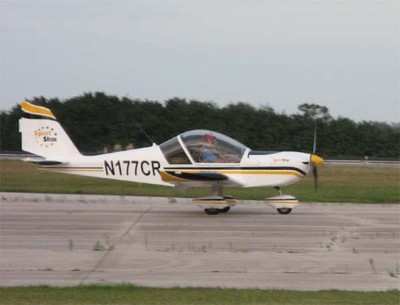
Evektor states the SportStar can climb at up to 840
feet-per-minute, and top out at 115 KIAS in level flight.
Advertised range is somewhat less than the Sting or Zodiac, at
"only" 700 nautical miles -- but keep in mind, that's still over
six hours of flying time.
I was mightily impressed with my flight in the SportStar; as I
walked away from the plane afterwards, even that bulbous
canopy finally looked "right" to me.
The Verdict: I Want One. Any One. Brother, Can You Spare
$100K?
Like I said before, I am no test pilot. Rather, I approached
each of these flights as, I suspect, many potential LSA customers
would: I wanted to see how the planes felt, and what impressions
they made on me, to see if I could envision myself at the controls
for my sport-pilot ticket. And without reservation, I suspect I'd
be happy as a clam in any of them.
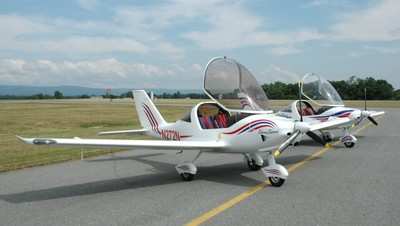
It's notable that each of these planes can handle a lot more
abuse than they likely ever will under sport pilot rules. All three
have flown for many years in the US or Europe, as homebuilt
aircraft as well as factory-built models. Each has also racked up a
respectable safety record, and has a solid history behind
them.
More importantly, though... they ARE real planes, through and
through. That cannot be emphasized enough. Limited in size and
gross weight by LSA rules, sure, but each makes the most of what
the rules allow.
All three aircraft felt far more substantial than I had expected
going in, with very little "tininess" or obvious concessions to
weight. (It's important to note, too, that this level of quality is
not limited to these three planes. Most of the LSAs
I've spent time in -- if only on the ground -- present an
impressive level of fit and finish, as well... and it's getting
better all the time.)
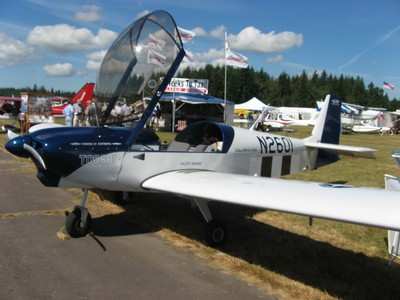
Yes, some components are obviously weight-optimized in their
construction. For example, all three aircraft sport somewhat flimsy
canopies, which is not surprising given the high weight of aircraft
plexiglass and the large viewing area each offers. It's
something to be mindful of in strong winds, though.
Once inside, however, all three feel surprisingly stout. I can
easily envision throwing an overnight bag into any of their baggage
compartments, and setting off for a scenic daytime cross-country
jaunt. No, they don't have the bank-vault solid feel a new Bonanza
does... but sheesh, have you priced a Bonanza lately?
SportAirUSA appears to be pitching the StingSport primarily to
the private pilot market, with little effort expended on entering
the training segment; on the other hand, the Zodiac and
(especially) the SportStar are gunning for the training market, and
each offers an IFR package that would conceivably allow pilots to
start their training under LSA rules, and then transition to their
private and instrument tickets using the same aircraft... burning
all of 4-5 gallons of fuel per hour while doing it. That's an
exciting concept.
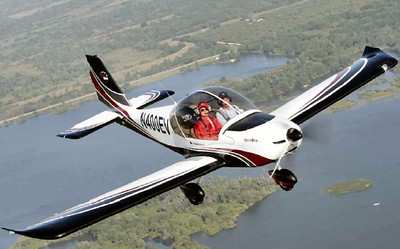
Don't get me wrong -- I'd love to see these planes offered for
less than their current pricetags, even if that meant entry-level,
stripped-down, paint-optional models. However, when you consider
the high quality and craftsmanship apparent in these planes,
and the high level of equipment available... I grudgingly concede
the prices are probably fair for what you get.
Now all I need to do it figure out how I can afford one on
aero-writer wages...
 ANN's Daily Aero-Linx (05.06.25)
ANN's Daily Aero-Linx (05.06.25) ANN's Daily Aero-Term (05.06.25): Ultrahigh Frequency (UHF)
ANN's Daily Aero-Term (05.06.25): Ultrahigh Frequency (UHF) ANN FAQ: Q&A 101
ANN FAQ: Q&A 101 Classic Aero-TV: Virtual Reality Painting--PPG Leverages Technology for Training
Classic Aero-TV: Virtual Reality Painting--PPG Leverages Technology for Training Airborne 05.02.25: Joby Crewed Milestone, Diamond Club, Canadian Pilot Insurance
Airborne 05.02.25: Joby Crewed Milestone, Diamond Club, Canadian Pilot Insurance







